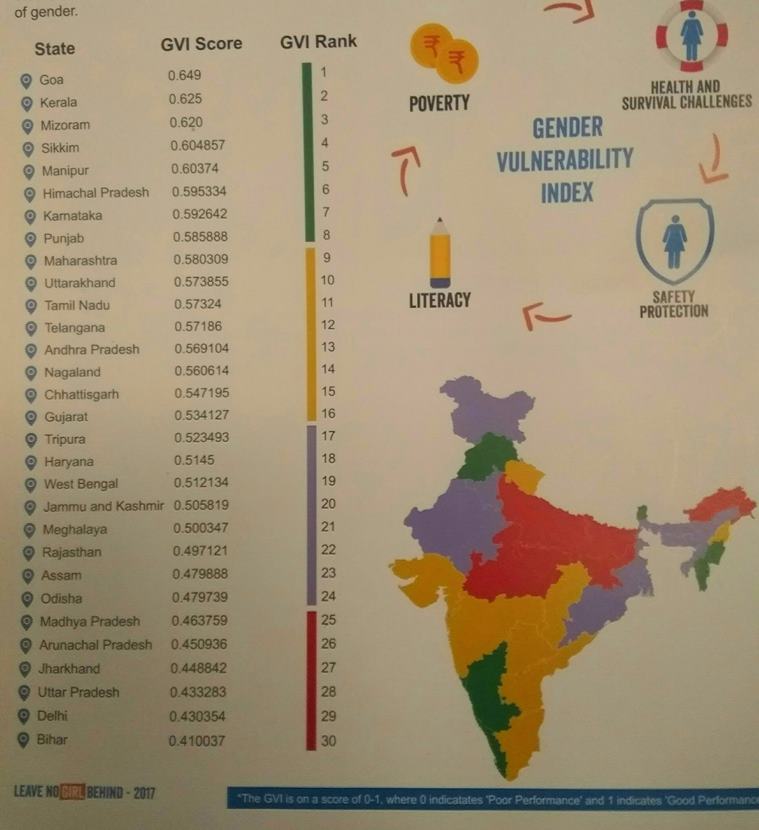Goa ranked top and Bihar featured at the lowest in Gender Vulnerability Index (GVI) released by Child development NGO Plan India. The composite index has been developed within research for the NGO’s Plan for Every Child campaign which is aimed at comprehensively understanding the dimensions of various problems affecting children, particularly girls, in difficult circumstances. The index, which provides a state wise ranking, has been calculated by analysing four issues pertinent to the situation of girls — child safety/protection, poverty, health and education. In the ranking, Goa is followed by Kerala, Mizoram and Sikkim. Bihar ranked the lowest at 30, with Delhi faring only slightly better at 29 and Uttar Pradesh at 28. The highest ranking north Indian state is Himachal Pradesh at the sixth position.
The GVI report released by Plan India on November 1 during its national conference in Delhi. The multidimensional index, which analyses more than 170 indicators, has been developed to serve as measurable evidence with the aim of assisting and influencing policy makers.
The education GVI, for instance, is analysed with the help of more than just state literacy figures. The state’s school dropout rate and existing school infrastructure are also accounted for in it. “The idea in this case is to analyse available data for all factors which comprehensively impact the ability for a girl child to get an education,” says Pradeep Narayanan, Director of Programme Policy and Strategy at Plan India. Similarly, poverty index accounts for indicators of income, assets and land ownership.
 Gender Vulnerability Index (GVI) released by Child development NGO Plan India ranks the states of India on a composite parameter of child safety/protection, poverty, education and health.
Gender Vulnerability Index (GVI) released by Child development NGO Plan India ranks the states of India on a composite parameter of child safety/protection, poverty, education and health.
Going forward, the organisation plans to present a further breakdown in the form of a district-level quantitative index, based on the same indicators. “Karnataka is an example of a state that is overall doing well [rank 7], yet there is a considerable divide between the north and the south of the state,” said Narayanan, explaining the need for zooming in further on individual state pictures.

